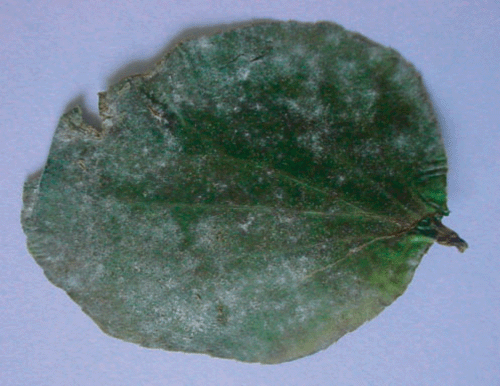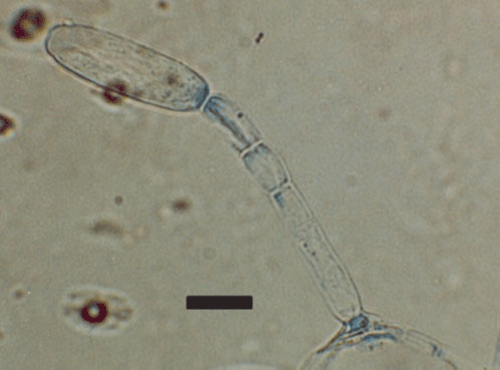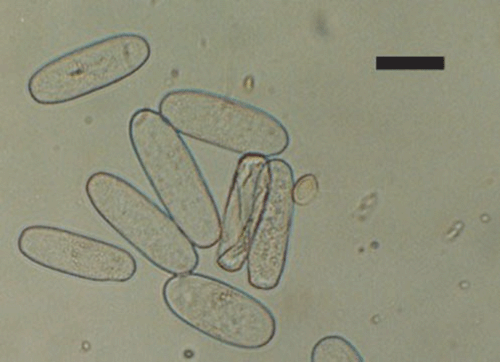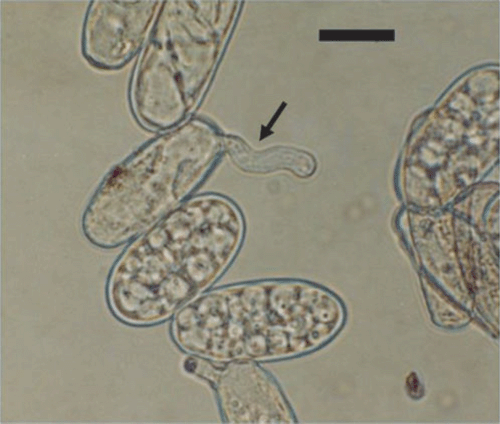First report of powdery mildew of Begonia cucullata var. hookeri in India
P. Baiswar A B , S. Chandra A , R. Kumar A and S. V. Ngachan AA ICAR Research Complex for NEH Region, Umiam 793103, Meghalaya, India.
B Corresponding author. Email: pbaiswar@yahoo.com
Australasian Plant Disease Notes 3(1) 83-84 https://doi.org/10.1071/DN08033
Submitted: 29 April 2008 Accepted: 17 June 2008 Published: 1 July 2008
Abstract
In February 2008, powdery mildew symptoms were observed on Begonia cucullata var. hookeri. Based on the morphological characters, the pathogen was identified as anamorphic Erysiphe begoniicola. This is the first report of this organism causing powdery mildew on B. cucullata var. hookeri in Meghalaya, India.
Begonia cucullata var. hookeri (=Begonia semperflorens), also known as perpetual begonia, belongs to family Begoniaceae. It is commonly grown as an ornamental plant in India.
Diseased leaves of B. cucullata var. hookeri collected from Shillong, Meghalaya (North East India) were found to be heavily infected by powdery mildew during February 2008. Many plants were found to be infected during a survey in Shillong. Disease symptoms included grayish white irregular patches consisting of epiphytic mycelia and conidia on both surfaces of the leaves (Fig. 1). A voucher specimen has been deposited in IMI herbarium collection, UK (IMI 396396).

|
Hyphae were up to 4–5 μm wide with multilobed appressoria. Conidia were harvested by dislodging them from infected tissue onto a strip of clear tape, using a camelhair brush. The tapes were mounted on microscope slides (Correll et al. 1987). Conidiophores were straight, containing a foot cell (42.6–58.4 × 10.2–12.4 μm) followed by two or three short cells; conidia were cylindrical in shape (30.6–46.2 × 15.2–18.3 μm) and produced singly (Figs 2, 3). Fibrosin bodies were absent. Shoulder germination of conidia was also observed (Fig. 4). Based on these morphological characters, the fungus was identified as a powdery mildew anamorph belonging to Erysiphe begoniicola (=Microsphaera begoniae) (Braun 1987). No perfect stage (chasmothecium) was found to be associated with this fungus. Pathogenicity was confirmed by dusting conidia onto healthy potted plants of B. cucullata var. hookeri; non-inoculated plants served as controls. Inoculated plants developed symptoms after a week, whereas control plants remained healthy.

|

|

|
Erysiphe (section Erysiphe, Microsphaera) spp. and Golovinomyces spp. have been previously reported from Europe (many countries), China and Australia (Kiss 1994; Farr et al. 2005). To our knowledge, this is the first record of powdery mildew caused by E. begoniicola on B. cucullata var. hookeri in India.
Acknowledgements
The authors would like to thank Prof. Dr Uwe Braun for providing the literature.
Braun U
(1987) A monograph of the Erysiphales (powdery mildews). Beihefte zur Nova Hedwigia 89, 1–700.
[Verified 17 June 2008].
Kiss L
(1994) Erysiphe cichoracearum DC. on Begonia tuberhybrida in Hungary. Acta Phytopathologica et Entomologica Hungarica 29, 57–59.



